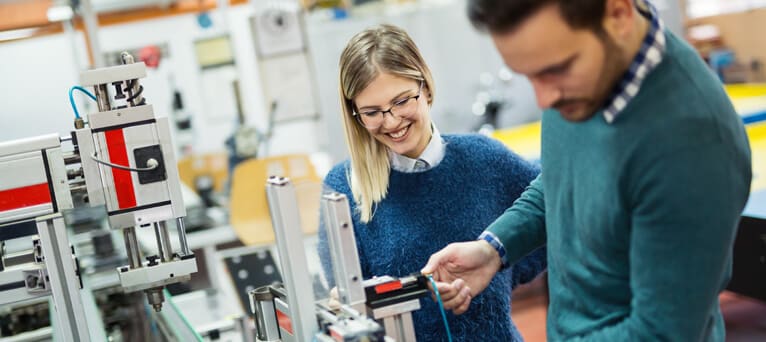Supervisors:
Professor Christopher Hutchinson (Monash), Professor Michael Preuss (Monash) and Dr David Stewart (Rolls-Royce, UK)
Application deadline:
accepting applications immediately with a preferred start date no later than March/April 2023
Fully Funded PhD Project: open to Australian, UK or US citizens only
About the project
The current benchmark for existing galling resistant hardfacing alloys are Cobalt-based Stellite alloys. There are a range of applications where Co-based materials are less desirable and one example is in a nuclear reactor because of the possibility of activating Co. It would be desirable to have an excellent hard-facing material based on Fe.
This project is a collaboration with Rolls Royce to develop a new Fe-based hardfacing alloy that can resist galling under relevant operating conditions. The approach will be based on an austenitic matrix and will tailor the strain hardening behaviour of the matrix and examine how this depends on chemistry and influences the galling performance.
This project is funded by and will involve close collaboration with Rolls Royce, UK. The successful PhD candidate will have the opportunity for multiple visits to the UK as part of their PhD to utilise research facilities within the Henry Royce Institute (https://www.royce.ac.uk/) and will be able to attend international conferences.
Interested candidates:
This project is open to Australian, UK or USA nationalities only. The candidate should have a 1st class Undergraduate or Masters degree (or equivalent) in Materials Science and Engineering, Metallurgy or a related discipline. A strong background in metallurgy, microstructural characterisation and/or mechanical testing is advantageous.
To express an interest please provide:
- a curriculum vitae (CV) including your academic transcripts,
- a cover letter summarising your research interests and suitability for the position, and
- the contact details of two referees.
Please send to: Professor Christopher Hutchinson – [Email Address Removed],
Professor Michael Preuss – [Email Address Removed],
https://www.monash.edu/engineering/christopherhutchinson
https://www.monash.edu/engineering/michaelpreuss
Living in Melbourne and the research environment at Monash University
Monash University is located in Melbourne, Australia. It is Australia’s largest University, ranked in the top 50 universities in the world, and the Department of Materials Science & Engineering (MSE) is the top-ranked MSE department in Australia. The successful applicant will be embedded within the Metallurgy & Corrosion Cluster which consists of ~8 academic staff members, ~ 70 PhD students and 30 post-docs. Whilst the student will be directly supervised by the academics listed above, they become part of a highly collaborative and collegial cohort of researchers where communication and interaction with other researchers and sharing of expertise and experiences is highly valued. The Metallurgy & Corrosion Cluster at Monash especially values and encourages diversity in its participants – diversity in all senses of its meaning. We recognise and value the contribution to science that arises from different opinions, from people of different backgrounds and experiences, and try to encourage this at every opportunity. As a result, our PhD students become highly competent researchers with excellent communication and teamwork skills and are highly sought after for post-doc positions at the most reputable research institutions in the word or future leaders in industry.
Metallurgy research Monash is one of the top-ranked fields of research at Monash and is one of the best known and highly ranked groups in the world (https://www.shanghairanking.com/rankings/gras/2020/RS0227). Monash has a wide range of world class infrastructure to support your research including the Monash Centre for Electron Microscopy (https://www.monash.edu/researchinfrastructure/mcem), the Monash X-Ray Platform (https://www.monash.edu/researchinfrastructure/x-ray), and co-located at Monash University is the Australian Synchrotron (https://www.ansto.gov.au/facilities/australian-synchrotron). All the facilities required for your project can be found at Monash.
Melbourne is the 2nd largest city in Australia, with a population of ~4.5 million and is frequently voted one of the most liveable cities in the world (https://www.invest.vic.gov.au/why-melbourne/a-worlds-livable-city). It is the arts and culture capital of Australia and Melbournians are passionate about food, coffee, culture and sport. Melbourne is a highly multicultural city welcoming people from all around the world who have made Melbourne their home. This is reflected in the diverse cuisine and languages one can find when walking around Melbourne. Melbourne is a waterfront city located on Port Phillip Bay and intersected by gardens, walking and riding paths and within day trip driving distance to wine regions, surf beaches and countryside (the bush!). Melbourne hosts more than 5 large universities, leading to a large and lively student population and is the host to major international sporting events such as the Australian Open and the Australian Grand Prix.

 Continue with Facebook
Continue with Facebook



